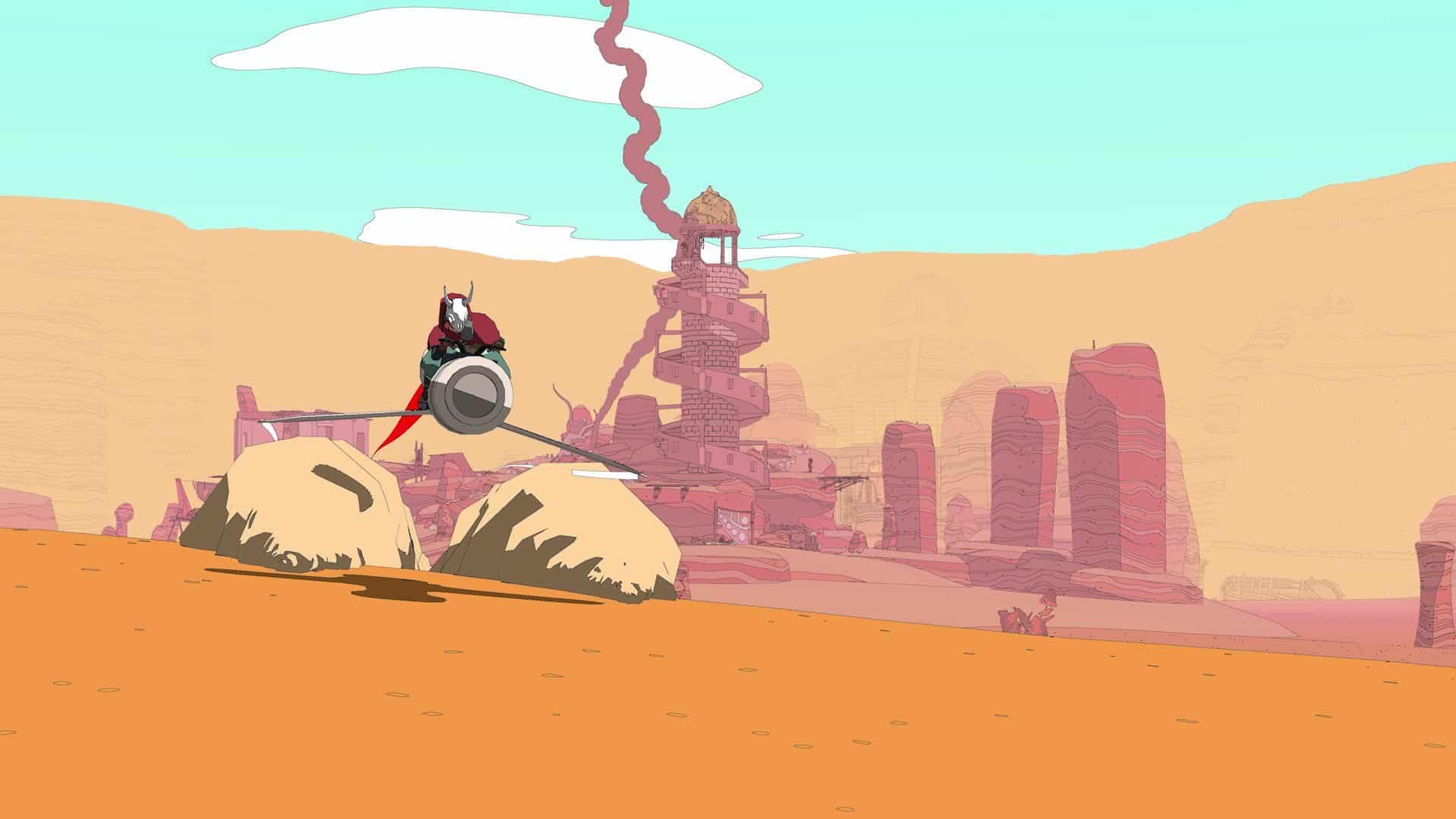Video Gamer is reader-supported. When you buy through links on our site, we may earn an affiliate commission. Prices subject to change. Learn more
Compare two demos that drifted onto the Xbox on the same day: Lake, from developer Gamious, and Sable, from Shedworks—a studio of two people that, true to its name, started in a garden shed. Lake is about Meredith Weiss, a stressed-out striver who quits the city and returns to her hometown for two weeks to do postal work. Sable is about Sable, a young woman who lives in a desert tribe, called the Ibex, and must soon travel out into the world in search of purpose. Might I propose a trade? What these two restless souls need is an exchange program. Sable can fill in for Meredith, in the city, tapping away into the small hours on software proposals; while Meredith can hop onto Sable’s hoverbike, forget the post, and deliver herself from frustration.
Light on mechanics and combat-free, both games proceed with the noble intention of chilling you out, but whereas I chafed against the stillness of Lake, I slipped more readily into the flow of Sable. Considering the demo is set in a large but bounded area—a lake of sand, so to speak, whose residents must contend with the coarse grain of life—and has you scavenging for scrap in order to build a bike, it isn’t immediately clear why this should be the case. It has something to do, I think, with the script, which makes plucky poetry of such chores. “Our bikes are reborn in the ruined ships,” one character says, before adding, with a pinch of pragmatism, “A good start would be the ship down there near the camp.” This blend of the hardscrabble and the ethereal is the game’s—or, at any rate, the demo’s—defining atmosphere. Taking its cue from the desert, the mood is a shifting mixture of the dead and the quick; you feel yourself sinking into it, but you sense that it could whip itself up into a storm.

If the plot, at least in the hour-long demo, doesn’t throw up any bolts of bad weather, turn your attention to the art direction, by Gregorios Kythreoti. There you will find squalls of wild colour. Kythreoti clearly took one look at the work of Jean Giraud, better known as Moebius, and never looked back. Note the sky, early on: a pale sea green, with white clouds whisked across it like foam. And check out the twin plumes coughed up by Sable’s practice bike—the green-brown gush of its exhaust mingled with the latte-coloured dust that barrels in its wake.
The last director to fall for the work of Giraud was Keiichiro Toyama, who wrought the city of Hekseville, in Gravity Rush, but the fall was tinged with the practical. Toyama, who had previously made Silent Hill, was no stranger to smothering technical limitation with style; just as the meagre draw distance of the PlayStation was dampened with fog and darkness, so the details of Hekseville’s far-off districts, on the PS Vita, were swashed in ambiguous shades of purple and orange. No such graphical limitations hold sway over Kythreoti, who seems happy to inherit Giraud’s otherworldliness, flooding the landscape in flat tones, like a dream, hazed-over and half-remembered. I only wish that, against that surrealism, Sable herself felt more earthbound. She flickers along at a lower frame rate (a stylistic choice, lending her movements a staggered look), and the motions of exploration and traversal have a submarine quality. What it could use is a rush of gravity.

Instead of which, what we get is the Gliding. I’m still not completely sure what to make of this vaguely mysterious gerund. At first, I presumed it made reference to the hovercraft for which you collect parts. Then, I realised it may in fact describe the powers bestowed upon our heroine, with which she clasps herself in a bubble of light and breezes gently down from great heights. (“Gliding Stones are vessels for the perpetual,” we’re told. “They suck up its power like little sponges.”) Or maybe it refers to a coming-of-age rite; we hear tales of one Ibexii, who, after her Gliding, left the camp and has yet to waft her way back. (Perhaps, like Meredith, she will be lured home by the promise of more grounded work.) I still don’t have a grasp on the mythology that Shedworks has conjured, and, truth be told, I prefer it that way. “There’s a lot to be said about ritual and independence and all of that out there,” one character says. “My advice? Try to have fun.”
Indeed, to that end Shedworks has taken in The Legend of Zelda: Breath of the Wild. Sable can shimmy up sheer rock as long as her stamina bar—a draining diamond—allows. And the quests, which aren’t weighed down with story, are marked out with minimal fuss and can be ignored, if you’d rather stray. Depending on the game—and, of course, on the skill of the developer—quests can either root you in the fiction of a place or suck up its power like little sponges, vessels for the perpetually dull. Here they feel calibrated to suit Sable’s days—the prising of control panels from rusty ships, the trapping of beetles for a child—while freeing you up to ride and ruminate on nothing much. The game is out on September 23, on Xbox Series X / S and PC, when we will get to see more of its strange vistas. I look forward to playing more of Sable, but part of me wonders how much of its elusive power hasn’t already been imparted.

